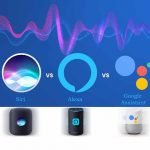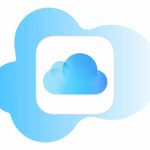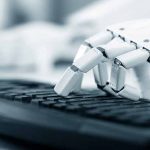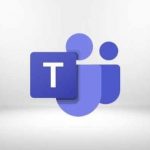What is digital technology
Digital technologies are electronic tools, systems, devices and resources that generate, store or process data. Well known examples include social media, online games, multimedia and mobile phones.
Digital learning is any type of learning that uses technology. It can happen across all curriculum learning areas.
Digital technologies have advanced more rapidly than any innovation in our history – reaching around 50 per cent of the developing world’s population in only two decades and transforming societies. By enhancing connectivity, financial inclusion, access to trade and public services, technology can be a great equaliser.
In the health sector, for instance, AI-enabled frontier technologies are helping to save lives, diagnose diseases and extend life expectancy. In education, virtual learning environments and distance learning have opened up programmes to students who would otherwise be excluded. Public services are also becoming more accessible and accountable through blockchain-powered systems, and less bureaucratically burdensome as a result of AI assistance.Big data can also support more responsive and accurate policies and programmes.
However, those yet to be connected remain cut off from the benefits of this new era and remain further behind. Many of the people left behind are women, the elderly, persons with disabilities or from ethnic or linguistic minorities, indigenous groups and residents of poor or remote areas. The pace of connectivity is slowing, even reversing, among some constituencies. For example, globally, the proportion of women using the internet is 12 per cent lower than that of men. While this gap narrowed in most regions between 2013 and 2017, it widened in the least developed countries from 30 per cent to 33 per cent.
The use of algorithms can replicate and even amplify human and systemic bias where they function on the basis of data which is not adequately diverse. Lack of diversity in the technology sector can mean that this challenge is not adequately addressed.
What are types of digital technology?
Simple Examples of Digital Technology
Having spent most of my life working in the technology field, one of the biggest challenges technology has, is that even though it is often cited as simplifying or improving our lives, it can be difficult to keep up with or understand.
- Video technologies for working from home
- GPS, What3Words and Location
- 5G and Virtual Reality
- Smart homes
- Cloud and SaaS
- Artificial Intelligence (AI)
- Deep fake and AI
- Bitcoin and blockchain
- Cybersecurity and Biometrics
- Combination of tech such as AI, IOT, Drones and connectivity
- Mobile Phone Roaming & Digital Connectivity using eSIMs
What is the use of digital technology?
Digital technology enables the storage of massive amounts of information in relatively small spaces. Large amounts of media, such as photos, music, videos, contact information, and other documents can be carried around on small devices like mobile phones. As well as physical locations, data can also be stored online, enabling it to be accessed from any device which has internet access.
Advantages of Digital Technology
Digital technology has transformed nearly every aspect of modern life. Travel, work, shopping, entertainment, and communications are just some of the areas that have been revolutionized in recent decades. It’s now rare to find an electronic device or piece of machinery that doesn’t incorporate digital technology in some way.
Digital technology means that devices can be more compact, faster, lighter, and more versatile. Huge amounts of information can be stored locally or remotely and moved around virtually instantaneously. Even the term “information” has expanded to include media such as photos, audio, and video, and no longer refers to just words and numbers.
16 Digital Technology Benefits
- Social Connectivity
- Communication Speeds
- Versatile Working
- Learning Opportunities
- Automation
- Information Storage
- Editing
- Accurate Duplication
- GPS and Mapping
- Transportation
- Low Cost
- Entertainment
- News
- Warfare
- Banking and Finance
- Smaller Sized Devices
Digital technology through the lens of language
Digital technology is an invisible omnipresent force in our lives, and without it, our societies as we know them today could not exist.
We know what technological breakthroughs in computing and machine learning enabled these developments. But why they work so well in societies and cultures all over the world is lesser-known. In this talk, Bob van Luijt will introduce three, high-level, ideas why software works so well based on its ability to adapt to our language. Bob (1985) started his first software business when he was 15 years old.
During his late teens and early twenties, he studied music in The Netherlands (ArtEZ) and received a Fulbright scholarship to study at Berklee college of music in Boston. After his studies, he grew his software consultancy business focussing on software enabled business models and products working for a number of enterprise clients in Europe while creating multiple software-art installations which were exhibited at a variety of tech-art and design festivals in Europe and the US. In 2019 he followed the executive eduction program at Harvard Business School and co-founded the machine learning database company SeMI Technologies where he has the role of CEO.
He has spoken at over 100 events on the topics of software, business models and creativety in Europe and the US. This talk was given at a TEDx event using the TED conference format but independently organized by a local community.
What are some everyday examples of digital technology?
digital technology at a fundimental level redices data to ones and zeros,
These are combines tobibary codes – strings of zeros abns ones that can be made to represent any kind of data
music is audio data- ,sounds that chanfe in frequency. Misic is concerted into difitasl by use of an analog to digital converter- an electronic gadget that converts the physocal audio recording into binery digital data- strings of ones and zeros
cd rom players,mobile phones and computers are all examples of difital technology
if you take analog radio as an example, eventually as the distance between transmitter and receiver increases, received audio becomes worse in quality and eventually unreadable.
If the ling (radio transmission) used difital radio the quoality of the sound inproves because the electronics knows it is only looking for a zero or 1.
What are 5 examples of digital computer?
Examples of Digital Computers
- Personal Computers (Desktops, Laptops, Notebooks, and Chromebooks),
- Smartphones, and Tablets,
- Calculators,
- Digital Weighing Machine,
- Accounting machines,
- Digital clock,
- ATM (Automated Teller Machine).
Uses of Digital computer
Scientific research: Digital devices are used to solve mathematical calculations, numerical counts, etc.
Technical applications: these are applications where digital tools are used to facilitate engineering designs, drawing plans, commercial product designs, etc.
Control systems: consist of remote control mechanisms designed for use in private and industrial homes. Such as electrical appliances, turning the lights on or off, defrosting the refrigerator, regulating the heating or air conditioning, starting the coffee maker, etc.
Advantages of Digital Computer
Digital systems have made possible many industrial, scientific, and commercial advances that would have been unattainable otherwise.
Information or data can easily store in digital computer systems as compared to analog ones. Also, many additional features and units can often be added to a digital system more efficiently.
If we talk about results, then digital computers provide more accurate results than analog computers but, Analog computers are much faster than digital ones.
Other merits of digital computers are more reliability, flexibility, versatility, compatibility, less expensive, and ease to control.
Disadvantages of Digital Computers
Digital systems consume more energy than analog circuits to accomplish the tasks, thus producing more heat.
The Digital circuits are often fragile. If a single piece of digital data is lost or misinterpreted, the meaning of large blocks of related data can completely change.
Digital computers manipulate discrete elements of information by using a machine language (binary code).
What are 2 commonly used digital technologies?
20 Examples of Digital Technology
- Websites
- Buying and Selling Online
- Smartphones
- Digital Televisions
- Video Streaming
- eBooks
- Digital Music
- Geolocation
- Blogs
- Social Media
- Computers
- Printers
- Self-Scan Machines
- ATMs
- Digital Cameras
- Cars and Other Vehicles
- Clocks
- Robotics
- Drones and Guided Missiles
- Banking and Finances
What are examples of digital tools?
- Word processing documents.
- Slide presentation software.
- Electronic reference materials.
- Tablet and cellphone apps.
Why is it called digital technology?
Digital technology is a base two process.
Digitized information is recorded in binary code of combinations of the digits 0 and 1, also called bits, which represent words and images.
Digital technology enables immense amounts of information to be compressed on small storage devices that can be easily preserved and transported. Digitization also quickens data transmission speeds. Digital technology has transformed how people communicate, learn, and work.
Telecommunications has relied on digital methods to transmit messages. In the early 1980s, enhanced fiber optics enabled the development of digital communication networks. Digital technology replaced analog signals for many telecommunication forms, particularly cellular telephone and cable systems. Analog-to-digital converters utilized pulse code modulation (PCM) to change analog data into digital signals. Compared to analog transmissions, digitized signals were less distorted and could easily be duplicated.
In 1998, commercial digital television broadcasts premiered in the United States. Communication satellites known as direct broadcast satellite (DBS) transmitted compressed digital signals for viewers to receive several hundred television programming choices. Other forms of digital information, including audio programs, were sent to subscribers via satellite. The Federal Communications Commission ordered all American broadcasts to be digital by 2010.
Since everything today relies on computers in some manner, the word “digital technology” is a fairly wide term that covers a lot of ground. All electronic instruments, automated systems, technical equipment, and resources that produce, process or store information are included in the definition of digital technology.
Artificial Intelligence. When we talk about the top ten latest technologies in computer science of 2021, AI comes at the first place as it’s a trending technology. AI technology includes machine intelligence which is believed to be smart and clever like the brain of a human and it also responds like humans.
Hypothetical technology, technology that does not exist yet, but that could exist in the future. Futures studies (also called futurology), the study of postulating possible, probable, and preferable futures and the worldviews and myths that underlie them.
Also read :
- How do you Make a Trending Video on TikTok? How Can I Make My Video Go Viral on TikTok?
- How to Get TikTok Followers : 9 Hacks to Get More Followers
- Top 10 Influencer Marketing Trends & Instagram Marketing Trends
- How do you get a verified check on Youtube? Verification badges on channels
- Top 10 Trending Blogs ; Inspiration For You To Start Blogging in 2021











